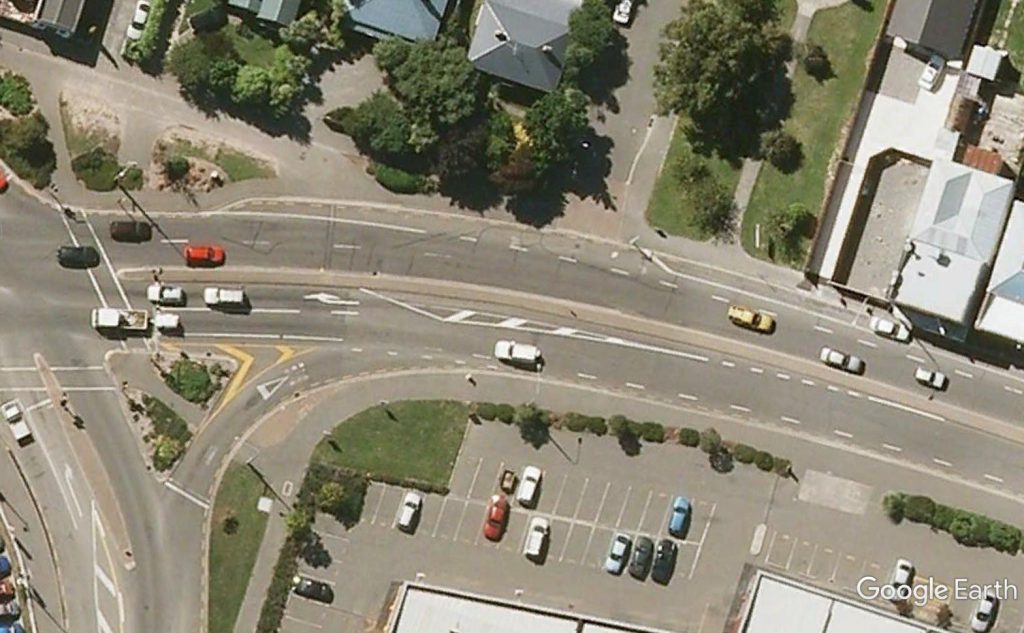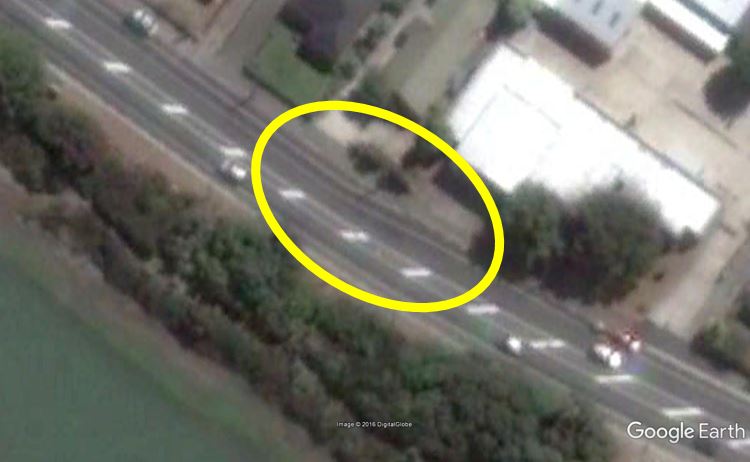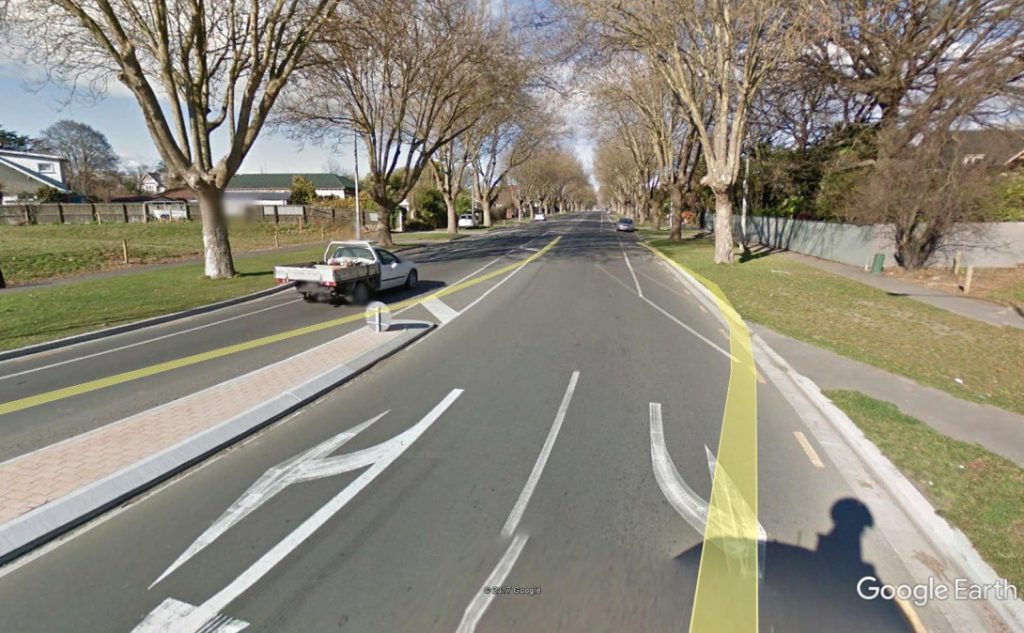Here’s a guest post from Darren who’s been thinking about his regular commute:
There’s an ongoing debate around the world regarding delineation of modes:
- Separate different types and speeds of travellers (think: footpaths, separated cycleways, medians, rail corridors, with signal-controlled intersections where they intersect)
- Mixing all travellers together (think: shared spaces, slow neighbourhood streets, Cashel Mall)
Both can work well, and both can fail. One of the potential issues with delineation, is that road users get used to it, not having to worry about other travellers on different modes (e.g. a car on the Southern Motorway and cyclists on the parallel cycle path; cars on the motorway don’t have to consider cyclists any more, but then have to mix with bikes on Brougham Street). The more delineation and direction you have, the more road users can come to rely on it, meaning less thinking (or a different type of thinking) is required. In situations where we go down this path, it’s important to get this delineation right.
I cycle home down Ferry Road every night, and the improvement that’s had the most impact on my perception of safety is some minor re-marking where the eastbound cycle lane comes away from the kerb at the Wilsons Road intersection by the old stadium, just to the east of Leyden Street. I’ve trawled through Google images to try and find a good resolution “before image” (the remarking occurred in mid 2016 I think) but failed. The “after” situation is shown below, a nice smooth curve as two lanes filter down to one. Previously this had a kink in it, probably less than a metre, but it meant that merging cars just cut across this kink (and very nearly me at least once a week).

There’s a similar situation a bit further east on Ferry Road as you come into Ferrymead and the cycle lane transitions from being alongside parked cars, to running along the kerb. This results in a very minor kink where the cycle lane maintains a consistent width, and the general traffic lane widens out. I understand that this taper meets all design guides and standards, but still it results in cars cutting across the cycle lane (and again, nearly me at least once a week) to be positioned in the left of the traffic lane when it has widened out. This is no doubt exacerbated by the slight left hand bend in the road.

Here’s another example looking south on Linwood Avenue from Avonside Drive (I used to cycle into work this way when I was based to the north of the CBD). You can see how the cycle lane used to be marked, with a significant kink before joining the off-road path, and how it’s now marked with a slightly narrower kink (full marks to council for doing this when I raised it as a safety concern). Left-turning vehicles onto Avonside Drive used to just cut straight across the cycle lane (and still do, but to a far lesser extent). Would there be opportunity here to have the delineation marked in a more natural line marked for left turning traffic so that they don’t cut across the cycle lane?

I guess the point I’m trying to get across is that the areas where I’ve had the most near misses as a cycling commuter are on bends, and where cycle lanes transition between the kerb and alongside parked cars. Kinks and lines that vehicles don’t naturally track along mean that drivers drift into cycle lanes (there may be examples of where cyclists drift into general traffic lanes).
The new major cycle routes make great use of complete separation, and intersection treatments are well thought through. It would be great to make minor tweaks to existing on road cycle lanes to provide safer (perceived or otherwise) access to the cycle routes. {Editor’s note: I think a few more cycle lane separator posts could also come in handy…}
Do you have any problems with on-road cycle lane alignments?


Thanks for posting, agree with the separator posts suggestion…
Thanks for the post and I also agree with the editor’s separators comment- the ones that came to my mind are on Bligh’s Road and I feel they do make a difference
https://www.google.co.nz/maps/@-43.5039571,172.6027013,3a,75y,222.15h,70.17t/data=!3m6!1e1!3m4!1segfu43DTE4ipk-6wfk6Vaw!2e0!7i13312!8i6656?hl=en